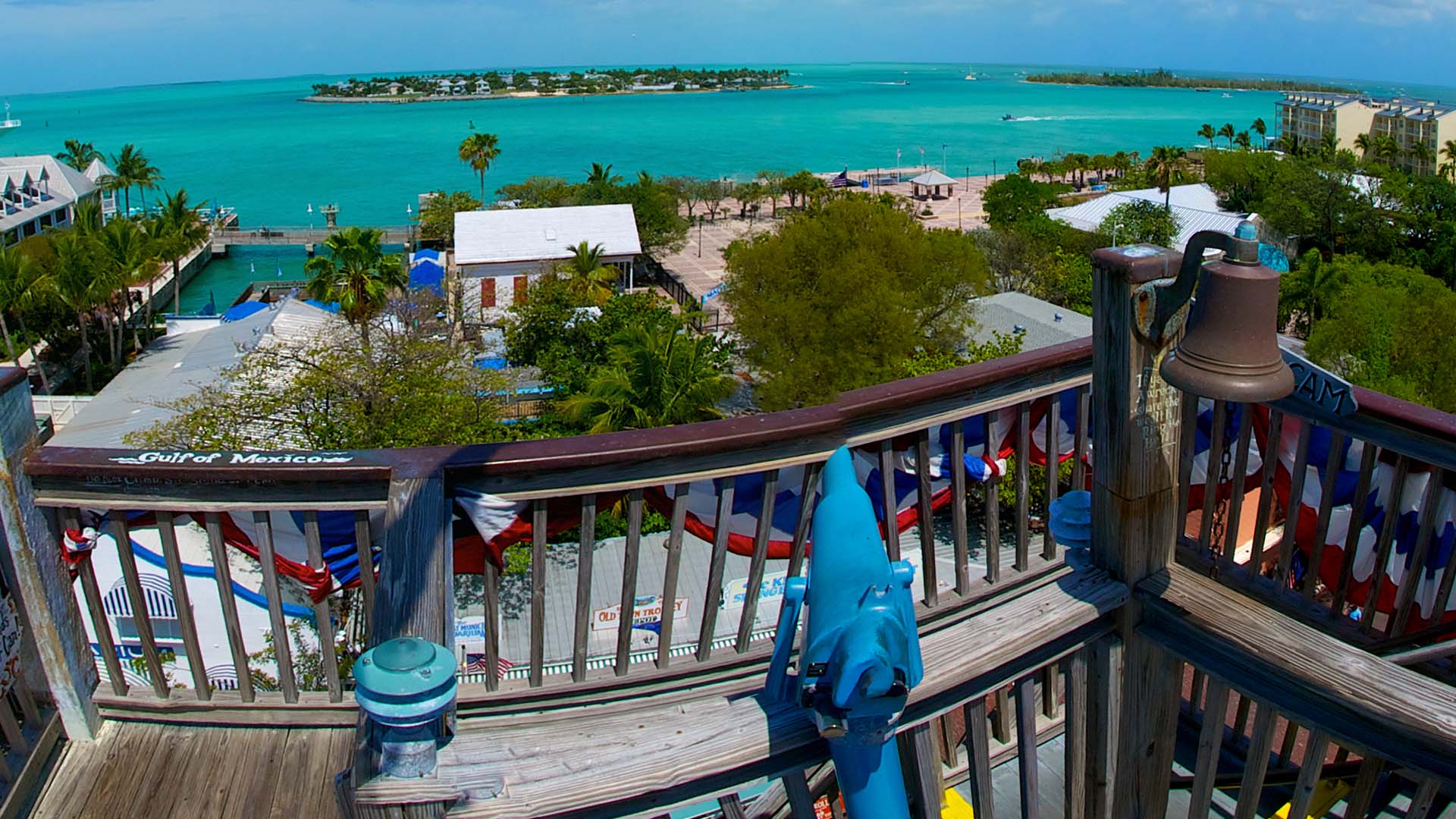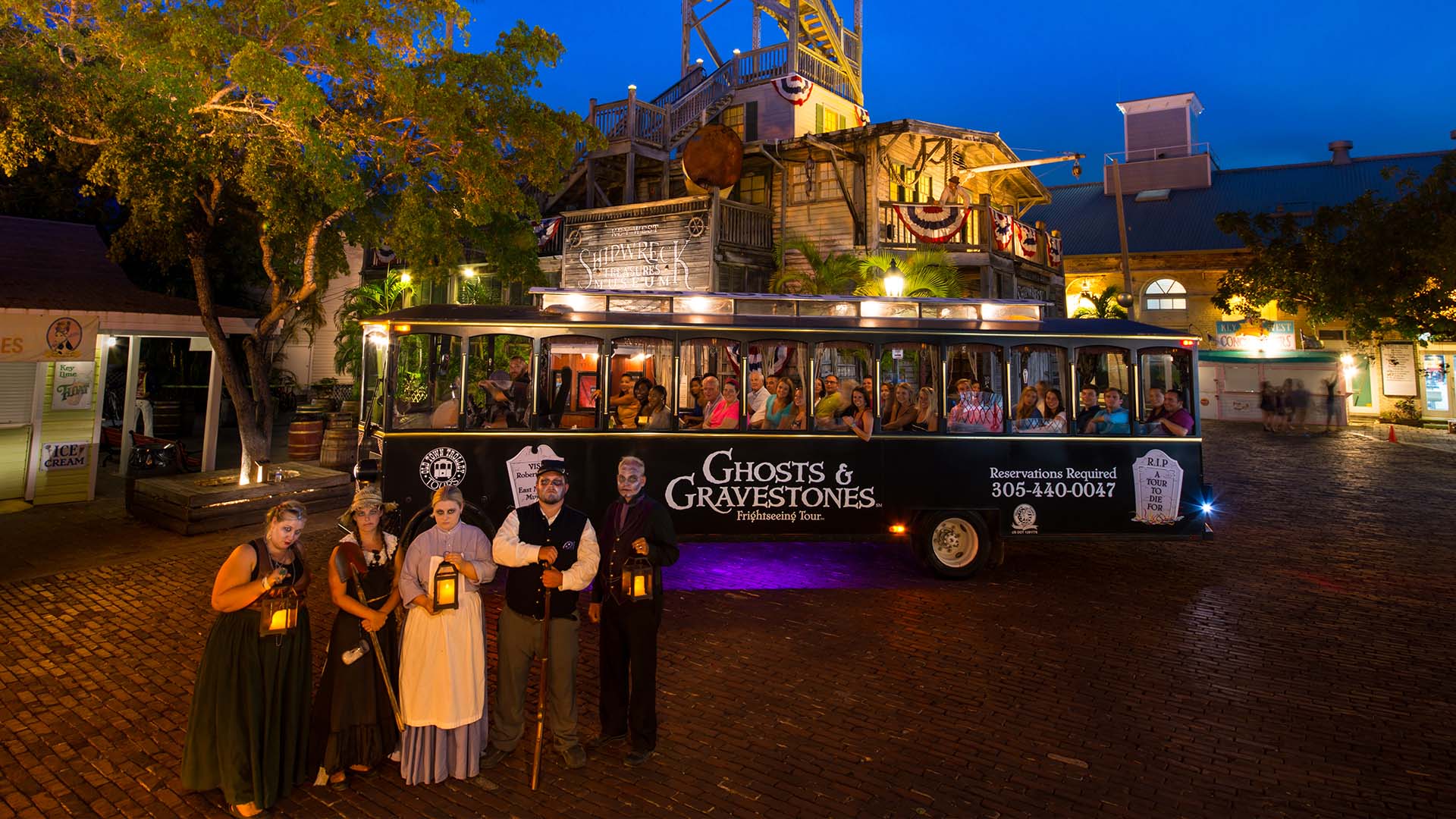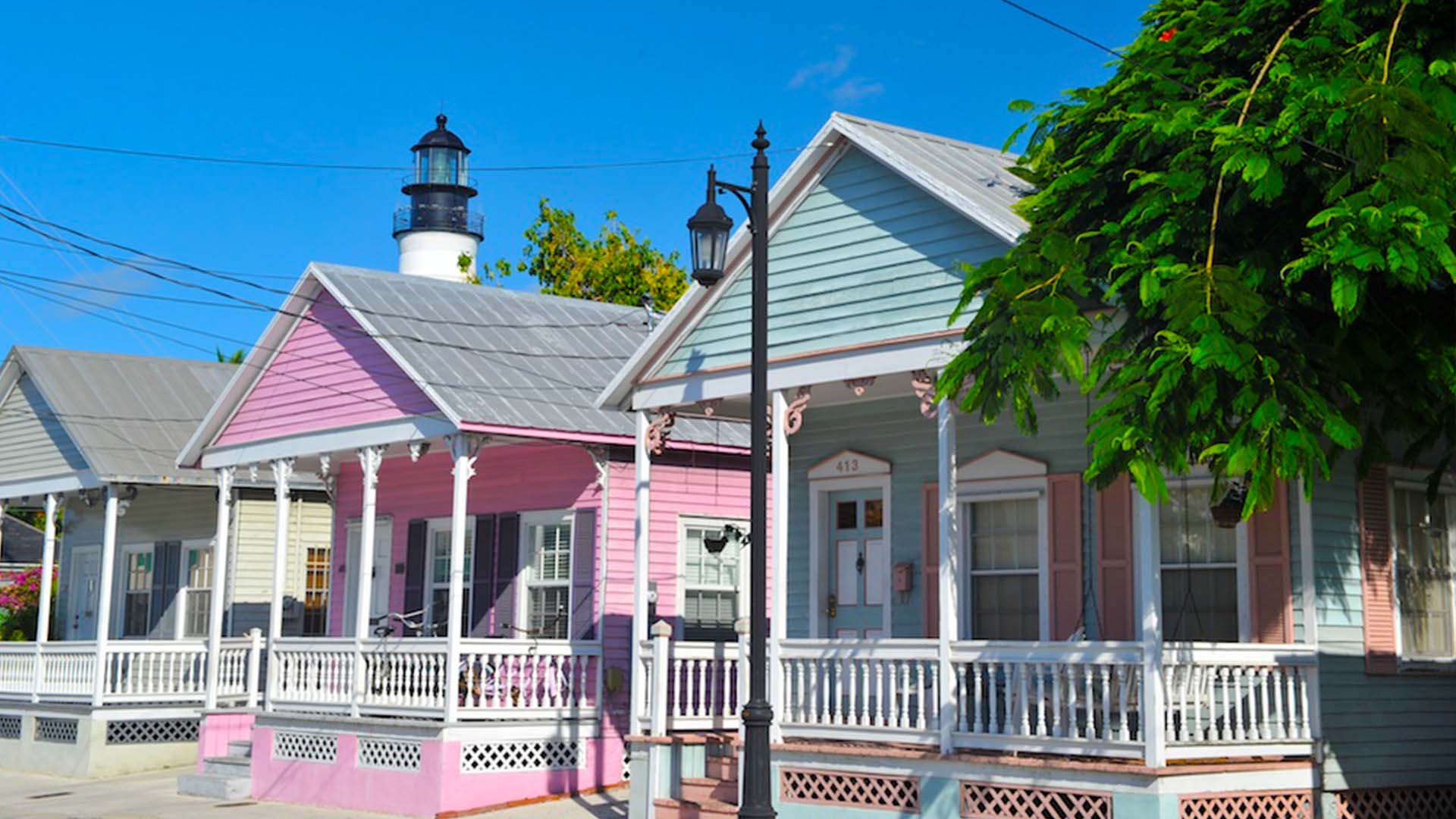Key West is unique for its blend of natural beauty, rich history and quirky charm. As the southernmost city in the continental United States, Key West offers a tropical escape with its stunning sunsets, crystal-clear waters and fascinating marine ecosystems where the Atlantic Ocean meets the Gulf of Mexico. It’s also famous for its relaxed, carefree atmosphere and its role as the birthplace of Jimmy Buffett’s Margaritaville. Additionally, the island’s deep-rooted history, from the Conch Republic independence story to its wooden historic district, adds to its undeniable allure.

Key West may be small in size, but it’s overflowing with charm, history and unique traditions that set it apart. This southernmost city in the continental United States has a fascinating story at every turn, shaped by its maritime heritage, colorful residents and a laid-back island vibe. From humorous declarations of independence to historic milestones, these Key West fun facts showcase why this beloved destination continues to captivate visitors from around the world.
Key West Is Called the Conch Republic
One of the most entertaining Key West fun facts is the city’s playful declaration of independence in 1982. Frustrated by a U.S. Border Patrol checkpoint on U.S. Route 1, which caused traffic jams that stretched for 17 miles, Key West’s leaders decided to take matters into their own hands. On April 23, 1982, they humorously seceded from the United States, declaring themselves the “Conch Republic.”
The checkpoint, designed to check vehicles for illegal immigrants and drugs, ended up hurting tourism — the lifeblood of Key West’s economy. The secession was meant as a symbolic protest, but it instantly captured attention and became part of the island’s identity. Locals embraced the name “Conchs,” a term that honors the conch shell, which has long been a symbol of island life.
Today, the spirit of the Conch Republic lives on in the annual Conch Republic Independence Celebration. Every April, the city bursts with life through mock naval battles, parades, and quirky events that celebrate its tongue-in-cheek rebellion. The festivities include live music, food vendors and community gatherings, drawing visitors eager to experience Key West’s unique humor and creativity.
The City of Key West Was Incorporated in 1828
While Key West is now a world-renowned destination, its beginnings were much more humble. Officially incorporated in 1828, the island quickly became a hub for maritime trade and wreck salvaging, also known as “wrecking.” The strategic location of Key West in the Gulf of Mexico made it a natural stopping point for ships, but its dangerous surrounding reefs often led to shipwrecks. Salvagers would recover valuable cargo from these accidents, creating wealth and growth for the small community.
At the time of incorporation, the 1830 U.S. Census listed Key West’s population at just 517 residents. Despite its modest size, the city flourished over the following decades, earning a reputation as one of the wealthiest communities in Florida thanks to its thriving maritime industry. Today, traces of this history can be found throughout the island, from its charming architecture to its museums dedicated to preserving the legacy of its early settlers.
Visitors walking through Old Town Key West can see well-preserved 19th-century homes, some of which belonged to early wreckers and prominent families who helped shape the island’s future. This fascinating blend of history and culture makes Key West one of the most intriguing places to explore in Florida.
The First U.S. President To Visit Key West Was Ulysses S. Grant in 1880
While Harry S. Truman is most often associated with Key West, the honor of being the first U.S. president to visit the island belongs to Ulysses S. Grant. In 1880, 11 years after leaving office, Grant arrived in Key West alongside Civil War General Phil H. Sheridan. The two men were traveling to Havana, Cuba, aboard a steamship, but they made a stop to explore Key West for the day.
At that time, Key West was one of the most prosperous cities in Florida. Its booming industries, including shipwreck salvaging and salt production, made it a hub of economic activity. Grant’s visit — though short — highlighted Key West’s growing prominence. Today, visitors can dive into Key West fun facts like this by exploring historic sites, museums, and walking tours that showcase the island’s storied past.

It Was Originally Called “Bone Island”
Before it was known as Key West, Spanish settlers referred to the island as Cayo Hueso, which translates to “Bone Island.” This name wasn’t chosen by accident. When the Spaniards first arrived, they found the island littered with human bones, sparking curiosity and intrigue. The bones are believed to have belonged to Native Americans, possibly left behind from battles or as part of burial rituals. The sight was so striking that the name stuck, even as the island evolved into the tropical paradise it is today.
For those interested in hearing more about Key West’s ghostly past, ghost tours in Old Town are a must. These tours uncover chilling tales tied to the island’s early history, giving visitors an opportunity to walk the same streets where legends and lore were born. It’s a side of Key West that’s equal parts haunting and captivating, offering a unique perspective on its rich heritage.
Key West Was a Major Hub for Salt Production in the 1800s
In the 19th century, Key West played a vital role in salt production, earning its place as a leading supplier of salt in the United States. The island’s flat terrain and intense heat made it ideal for salt harvesting, as seawater was collected in shallow ponds and left to evaporate naturally.
At its peak, salt production brought significant wealth to Key West, boosting the island’s economy and establishing it as a critical trade hub. However, the rise of refrigeration technology eventually reduced the demand for salt, and the industry faded into history.

Key West Is Home to the Nation’s Largest Wooden Structure Historical District
Key West holds the distinction of having the largest historical district of wooden structures in the United States. Listed on the National Register of Historic Places, this district showcases homes, shops, and buildings constructed during the 19th and early 20th centuries. Many of these wooden structures were built using salvaged materials from shipwrecks, a testament to the ingenuity of Key West’s early residents.
Wandering through Old Town, you’ll encounter charming conch-style homes with pastel facades, intricate woodwork, and welcoming porches. These homes, influenced by Bahamian architecture, reflect the island’s maritime heritage and the cultural connections that shaped its identity. Preserving these wooden buildings has been a labor of love for the community, ensuring that visitors today can experience Key West’s unique charm firsthand.
Many of these buildings have been transformed into shops, museums, and restaurants, offering visitors an immersive way to appreciate their beauty and significance.
Key West Is Connected to the Mainland by a Total of 42 Bridges
Key West is the southernmost point of the continental United States, and its connection to the mainland is nothing short of remarkable. A total of 42 bridges span the Florida Keys, linking the islands via the iconic Overseas Highway. Completed in 1938, the highway stretches 113 miles and includes the famed Seven Mile Bridge, one of the longest bridges in the world at the time of its construction.
Driving along the Overseas Highway is as much an experience as the destination itself. The route offers stunning views of turquoise waters, small islands and vibrant marine life, making it one of the most scenic drives in America. Visitors often take their time, stopping at roadside parks, fishing piers, and observation points to fully enjoy the beauty surrounding them.
The Atlantic Ocean Meets the Gulf Of Mexico at Key West
Key West is uniquely positioned where the Atlantic Ocean and the Gulf of Mexico converge, creating a fascinating blend of ecosystems unlike anywhere else in the world. The waters to the east are deep and vast, while the shallow, calm Gulf waters to the west provide a striking contrast. This meeting point supports an extraordinary diversity of marine life. From schools of tropical fish to sea turtles and dolphins, the waters around Key West teem with life that thrives in this rare environment.
Adding to its natural wonder is the Florida Reef, the third-largest coral barrier reef in the world. Stretching 170 miles from Miami to Dry Tortugas National Park, this reef is a haven for snorkelers, divers, and marine enthusiasts. Exploring this underwater world offers a glimpse into vibrant coral formations and colorful sea creatures, highlighting why the region is considered so special. Key West fun facts like these underscore the island’s ecological importance and its stunning natural beauty.
The Southernmost Point in the Continental U.S.
Key West proudly claims its position as the southernmost point in the continental United States. While the true southernmost location is Ballast Key, located 10 miles southwest of Key West, it is privately owned and inaccessible to the public. Instead, the Southernmost Point Buoy has become the beloved symbol of this geographical milestone.
This colorful buoy, painted in bright red, yellow and black, stands as one of the most visited landmarks in Key West. Its inscription, “90 Miles to Cuba,” is a nod to the island’s proximity to the Caribbean and serves as a popular photo spot for tourists. People from all over the world visit to snap a picture next to this iconic marker, making it a must-see during any trip to the island.
Beyond the buoy, the surrounding neighborhood offers charming streets, cozy cafes, and stunning views of the ocean, encouraging visitors to take their time and soak in the atmosphere.
It’s Home to the Smallest Parade in the Universe
If quirky events are your thing, Key West won’t disappoint. The island is home to the “Smallest Parade in the Universe,” a whimsical and hilarious tradition that takes place during Fantasy Fest. Unlike traditional parades, this event unfolds indoors, where tiny, handcrafted floats travel down a miniature version of Duval Street.
Each float is carefully designed, featuring vibrant decorations, themes and playful details that highlight the creativity of its makers. The mini parade is projected onto a large screen, allowing the audience to see every charming moment in detail. It’s a testament to Key West’s playful and artistic spirit. Among Key West fun facts, this parade stands out as a perfect example of the island’s ability to embrace the unexpected and create moments of magic.
Key West Is Home to the Original Margaritaville
For fans of Jimmy Buffett and the laid-back island lifestyle, Key West holds a special distinction as the birthplace of Margaritaville. In 1985, Buffett opened the first Margaritaville retail store on Duval Street, inspired by his hit song “Margaritaville,” released in 1977. The song encapsulates the island’s carefree charm, describing sunny days, ocean breezes and the simple pleasures of island life.
What started as a small retail store quickly grew into a global phenomenon. Margaritaville has become synonymous with relaxation, fun and escapism, expanding into restaurants, resorts and even themed cruises. Visitors can still experience the brand’s origins in Key West, browsing for souvenirs or enjoying the tropical vibes at one of its establishments.
This connection to Jimmy Buffett has cemented Key West as a haven for music, art, and leisure. The original Margaritaville is a reminder of the island’s role as a muse for artists and dreamers alike. For those looking to embrace the island mindset, it’s a must-see stop in Key West.
Conclusion
Key West is filled with fascinating history, quirky traditions and natural beauty that make it a one-of-a-kind destination. Whether you’re learning about the origins of the Conch Republic, marveling at the Southernmost Point Buoy or exploring the unique underwater ecosystems where the Atlantic Ocean meets the Gulf of Mexico, there’s always something new to uncover.
From its rich cultural past to its modern-day celebrations, Key West effortlessly blends charm, history and entertainment. These Key West fun facts remind visitors that the island isn’t just a tropical getaway — it’s a place where stories come alive, traditions are celebrated and every visit brings something memorable.
FAQs
Key West is full of surprises. Did you know it’s home to the third-largest coral barrier reef in the world, stretching over 170 miles? The island also hosts the whimsical “Smallest Parade in the Universe” during Fantasy Fest, where miniature floats parade down a tiny Duval Street. Another cool tidbit is that Key West’s Southernmost Point Buoy, while iconic, isn’t actually the true southernmost spot — that distinction belongs to the privately owned Ballast Key. With its quirky traditions, beautiful landscapes and colorful history, there’s no shortage of Key West fun facts to discover.
Yes, several notable historical figures have left their mark on Key West. Ulysses S. Grant, the 18th U.S. president, visited in 1880, making him the first president to set foot on the island. Ernest Hemingway, the iconic American writer, lived in Key West during the 1930s, where he penned some of his most famous works, including To Have and Have Not. The island was also a beloved retreat for President Harry S. Truman, who spent significant time at the Little White House, now a popular historical site. These figures, among others, are woven into Key West’s rich tapestry of history.
Key West is known for its eerie side, with its nickname “Bone Island” rooted in its macabre history. Early Spanish settlers discovered the island littered with human bones, a chilling sight that inspired the name “Cayo Hueso.” Today, ghost tours around Old Town offer spine-tingling stories of haunted houses and restless spirits. One of the most well-known spooky tales is Robert the Doll, a haunted artifact on display at the Fort East Martello Museum. If you’re drawn to mystery and the paranormal, exploring Key West’s darker history will reveal plenty of Key West fun facts that are both intriguing and haunting.